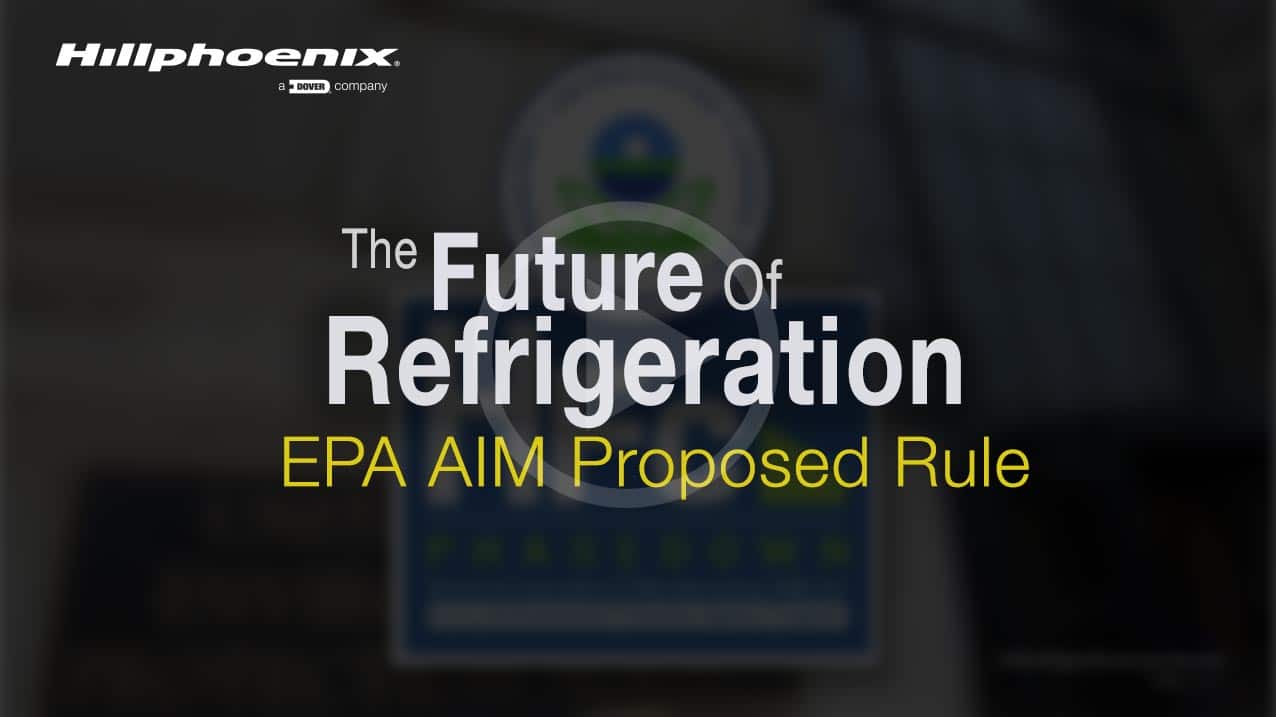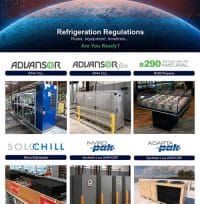Navigating and staying compliant with all of the new retail and commercial refrigeration regulations can seem daunting…
Many of the hydrofluorocarbon (HFC) refrigerants used in commercial refrigeration produce environmentally harmful carbon emissions. As the industry looks for alternative refrigerants with lower global warming potential (GWP) and ozone depletion potential (ODP), questions arise concerning regulatory changes, refrigerant performance and safety. Don’t worry, Hillphoenix offers refrigeration expertise and solutions that satisfy the regulatory needs of today and tomorrow.
The information below offers an overview of important regulations, effective dates, and agencies involved. Links are also provided for additional information on specific regulations. If you have questions, email us at info@hillphoenix.com or call us at 770-285-3264.
Regulatory Agencies

The California Air Resource Board (CARB) is an organization entrusted with educating and safeguarding communities from the harmful effects of air pollution and develops programs that combat climate change. Read more about CARB compliance.

The EPA’s Significant New Alternatives Policy (SNAP) was instituted under Section 612 of the Clean Air Act to identify and evaluate alternatives for ozone-depleting substances. Click here for more information concerning the EPA SNAP regulations.

The Department of Energy (DOE) has put rules and regulations in place impacting the commercial refrigeration industry. Click here to read more.

The Natural Resources of Canada organization is committed to improving the quality of life of Canadians by ensuring the country’s abundant natural resources are developed sustainably, competitively and inclusively. Click here to read more.

The U.S. Climate Alliance, which was established in 2017, is a bipartisan coalition of governors committed to reducing greenhouse gas emissions. Click here to read more.
Latest News
Check back often. We post the latest information when it becomes available.
Click on title to open post.
EPA Recognizes Hillphoenix With GreenChill Store Certification Excellence For 13th Consecutive Year
ATLANTA, Oct. 29, 2024 — Hillphoenix, a pioneer in environmentally sustainable refrigeration, has once again earned the GreenChill Store Certification Excellence recognition from the U.S. Environmental Protection Agency (EPA). This achievement recognizes the commercial refrigeration [...]
How Does the Finalized AIM Act Rule Impact Your Operation?
Earlier this month, the EPA announced its final ruling on Technology Transition Rule portion of the AIM Act, which will phase down hydrofluorocarbons (HFCs) in several industries. According to the act, the primary goals are [...]
Hillphoenix Earns EPA Greenchill Store Certification Excellence Recognition for 12th Consecutive Year
ATLANTA, GA, Oct. 10, 2023 — Hillphoenix, a pioneer in designing environmentally sustainable refrigeration systems, has once again earned the GreenChill Store Certification Excellence recognition from the U.S. Environmental Protection Agency (EPA). This achievement recognizes [...]
Proposed Rule 26 – Listing of Substitutes under the SNAP Program in Commercial and Industrial Refrigeration.
On May 1, 2023, EPA Administrator Michael S. Regan signed a proposed rule titled, “Protection of Stratospheric Ozone: Listing of Substitutes under the Significant New Alternatives Policy Program in Commercial and Industrial Refrigeration.” This proposed [...]
EPA AIM Act Proposed Rule
A new proposed rule from the US EPA (Environmental Protection Agency) would have the following impacts on equipment sold and used in the food retail industry if approved: Beginning January 1st, 2025 Equipment containing >200 [...]
Archives
New Jersey Department of Environmental Protection Guidance on Refrigeration Systems Reporting
Refrigeration Systems and Chillers Facilities with a refrigeration system and/or chillers requiring 50 pounds or more of a high-GWP refrigerant are required to register their facility, keep records of their refrigerant usage, and report that [...]
Four Tips to Keep Your Refrigeration Systems in Tip-Top Shape This Summer
The well-documented and ongoing battle against climate change is leading to increased regulation of the refrigeration industry pushing customers to switch from the use of HFCs as refrigerants to more eco-friendly alternatives, such as natural [...]
R-290 FAQs — Things You Need to Know!
R-290, also known as refrigeration-grade propane, has proven to be one of the most viable alternatives to high GWP HFC refrigerants in industrial and commercial applications. Now that the search for sustainable and environmentally friendly [...]
Public Hearing to Consider Proposed Amendments to the Prohibitions on Use of Certain Hydrofluorocarbons in Stationary Refrigeration, Chillers, Aerosols-Propellants, and Foam End-Uses Regulation
The California Air Resources Board (CARB or Board) will conduct a public hearing at the time noted below to consider approving for adoption the Proposed Amendments to the Prohibitions on Use of Certain Hydrofluorocarbons in [...]
Additional Resources
CARB – The Refrigerant Management Program (RMP) requires facilities with refrigeration systems containing more than 50 pounds of high-GWP refrigerant to conduct and report periodic leak inspections, promptly repair leaks; and keep service records on site. The regulation also requires service practices intended to minimize refrigerant emissions. Read More>
- CARB Service Technicians
- CARB Distributors/Wholesalers and Reclaimers
- CARB Rules for Businesses with Refrigeration Systems
- SNAP Substitutes in Refrigeration and Air Conditioning
- SNAP Regulations including Rules 19-23
- Questions and Answers About SNAP Alternatives
- EPA Ozone-Depleting Substances – This page provides information on compounds recognized as ozone-depleting substances (ODS) under the Montreal Protocol.
- EPA Stationary Refrigeration Leak Repair Requirements including Section 608 of the Clean Air Act.
- DOE Compliance Certification Database Walk-In Coolers and Freezers – Doors
- DOE Energy Conservation Standards for Walk-in Cooler and Freezer Refrigeration Systems; Final Rule

